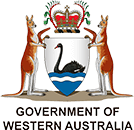Chronic lymphocytic leukaemia (CLL)
Key facts
- CLL is the most common type of leukaemia, and usually progresses slowly.
- It occurs most commonly in males over the age of 60 years.
- As CLL progresses very slowly, your doctor may recommend that you only need regular monitoring, rather than any active treatment.
- In some cases, your doctor may recommend medicines, such as chemotherapy or a targeted therapy.
- Occasionally, CLL can develop into a disease that progresses more quickly and needs urgent treatment.
What is chronic lymphocytic leukaemia (CLL)?
Chronic lymphocytic leukaemia (also known as chronic lymphatic leukaemia) is a type of blood cancer. 'Chronic' means it tends to develop slowly, and 'lymphocytic' means it affects cells called lymphocytes.
Chronic lymphocytic leukaemia (CLL) is the most common form of leukaemia diagnosed in Australia. It usually develops slowly, so you may have CLL for years without noticing any symptoms or needing treatment.
What causes CLL?
CLL affects B-lymphocytes, or B-cells, which are part of the immune system. If you have CLL, your body makes a large number of abnormal B-cells, crowding out normal blood cells and causing a range of symptoms.
Most people who develop CLL are adults over the age of 60 years, and the risk of getting it increases with age. Males are more likely than females to get CLL.
What are the symptoms of CLL?
Some people with CLL have no symptoms. You can have the condition and not know about it until it is discovered when you have a blood test for another reason.
If you do have symptoms, they may include:
- fatigue
- shortness of breath
- bruising or bleeding more easily than usual
- fever
- night sweats
- unintentional weight loss
- swelling of the lymph nodes (glands) in your neck, armpit or groin
It’s important to remember that these symptoms can be caused by a wide range of conditions other than CLL. If any of these symptoms concern you, see your doctor.
CHECK YOUR SYMPTOMS — Use the Symptom Checker and find out if you need to seek medical help.
When should I see my doctor?
If you are having symptoms and are worried it could be CLL or already have a diagnosis of CLL and feel unwell, see your doctor.
If you are experiencing side effects from your medicine for CLL, speak to your doctor about ways to manage them.
ASK YOUR DOCTOR — Preparing for an appointment? Use the Question Builder for general tips on what to ask your GP or specialist.
How is CLL diagnosed?
To diagnose CLL, your doctor will ask about your symptoms, examine you and refer you for blood tests. If your doctor thinks you may have CLL, they may refer you to a haematologist, a specialist who treats conditions of the blood and the organs that make blood.
You might also need other tests, which could include:
- imaging tests, such as CT scans, x-rays or ultrasound
- a bone marrow biopsy, which involves using a needle to take a sample of the marrow inside a bone, usually the hip bone
- a lymph node biopsy, which uses a fine needle to take a sample of lymph node for testing
FIND A HEALTH SERVICE — The Service Finder can help you find doctors, pharmacies, hospitals and other health services.
How is CLL treated?
Many people with CLL do not need treatment straight away, if at all. Instead, your doctor might suggest you have 'active monitoring'. This means having regular check-ups and blood tests to monitor your health and to identify any problems that need treatment.
If there are signs the disease is getting worse or your symptoms are causing you problems, you might need active treatment. This may include treatments such as:
- chemotherapy
- targeted therapies, such as monoclonal antibodies, which help your immune system fight the cancer
- a combination of these treatments
These treatments can cause side effects including fatigue, nausea and an increased risk of infections. Your doctor can recommend medicines or treatments to help you manage any side effects.
On rare occasions, your doctor may recommend a stem cell transplant. This treatment is usually only recommended for young people with aggressive CLL. This is because the risks of a stem cell transplant may be greater than the benefits for most people.
Your doctor may also recommend other therapies (supportive therapies) to help you manage some of the symptoms of CLL. These may include antibiotics and blood transfusions.
Living well with CLL
If you have been diagnosed and treated for CLL, you might need to take some time to adjust to any physical and emotional changes. You might also choose to re-evaluate certain aspects of your life including your workload, and to establish a new routine.
Once you are diagnosed with CLL, you will need to have the condition monitored for the rest of your life.
What are the complications of CLL?
In about 1 in 15 people with CLL, the disease changes to a type of lymphoma called diffuse large B-Cell lymphoma. This is a fast-growing type of cancer that needs to be treated quickly.
When you have CLL, you are at a higher risk of some other conditions such as skin cancer and infections so regular check-ups with your doctor are important.
Resources and support
- Contact your local Cancer Council for more information.
- Leukaemia Foundation provides blood cancer information and practical support.
- Lymphoma Australia educates and supports people diagnosed with lymphoma.
Learn more here about the development and quality assurance of healthdirect content.
Last reviewed: September 2023

















